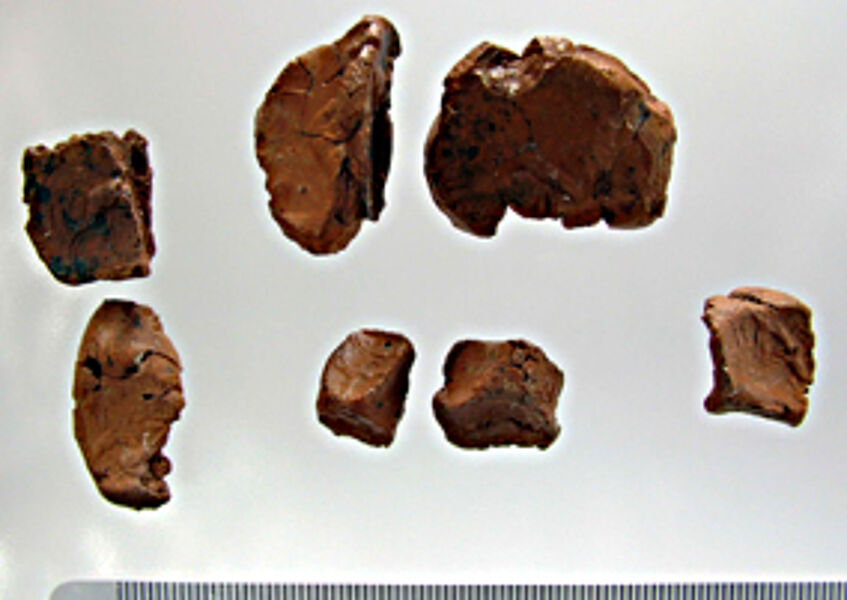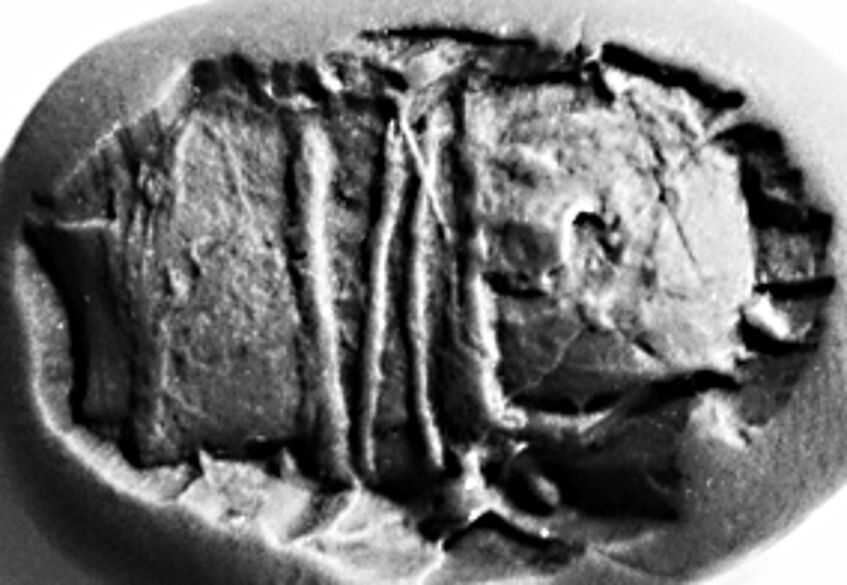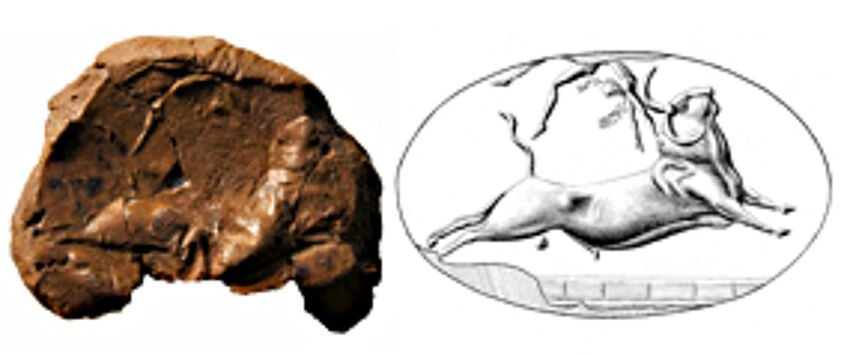Administration, writing and image in the prehistoric Aegean
Projektträger: Institut für Klassische Archäologie, Universität Wien
Projektleitung: Dr. Artemis Karnava
Finanzierung: FWF-Projekt M1427
Mitarbeiter: ao. Univ.-Prof. Mag. Dr. Fritz Blakolmer
The project aims at investigating the complex relations between administration and imagery in the setting of prehistoric Aegean societies, namely those of the 2nd mill. BC. At a second, subsequent level, administration and imagery will involve the technology of writing, in order to focus on the cognitive processes at play. These goals will be achieved through the writing of a monograph (entitled "Seals, sealings and seal impressions from Akrotiri, Thera") and further contributions in reviewed journals, as well as international conferences. The archaeological material that forms the basis of the proposed project comes from the ancient settlement of Akrotiri in the Aegean island of Thera, Greece. The specific material to be examined consists primarily of clay sealings dating to the volcanic destruction level.

fig. 1
Akrotiri in Thera is a prolific archaeological site in terms of the quantity and quality of archaeological finds. The volcanic eruption, that practically caused the internment of the prehistoric settlement under tons of volcanic pumice around 1630 or 1500 BC, is also responsible for the exceptional taphonomic conditions that resulted in the preservation of large bulks of material remains (fig. 1). The eruption prevented what is more or less the rule after settlement destructions: the plundering of the surviving objects in the course of time; it also kept human activity afar and nothing was built over the site, since some 10m. of thick volcanic pumice covered it completely. The material remains of the volcanic destruction level, i.e. the latest phase in the life of the settlement, appear therefore to represent an archaeological freeze-frame which always attracted the vivid interest of scholars and public alike. Interestingly enough however this pre-eruption picture proved to be far from frozen: there is nowadays sufficient evidence to suggest intense activity of the inhabitants of Akrotiri after an earthquake which preceded the volcanic eruption. The relevant evidence points to clearing from the main streets the collapsed building debris, to moving intact objects outside the buildings or their stacking in one well-preserved room of each building, in order for the damaged buildings to be repaired. Anybody dealing with the study of the latest pre-eruption Akrotiri is bound to face the question "to what extent are the contexts in which objects are found in Akrotiri the context of their use, as opposed to their storage contexts, or as opposed to their 'storage for protection against earthquake' contexts". In this respect, the contextualisation of finds and their subsequent interpretation is not as straight-forward as expected; on the contrary, Akrotiri presents researchers with the challenge of interpreting the past under the premise that all (or nearly all) evidence is at hand.
The major part of this project’s material, the sealings, belongs to this sort of exceptional finds which date to the latest pre-eruption period (fig. 2). Some 75 clay sealings have been retrieved from the volcanic destruction layers at Akrotiri. The overwhelming majority among these belong to a particular type of sealings of the period (known as ‘flat-based’ nodules, Päckchenplomben, or, simply, document sealings): these sealings were securing a thread wrapped around what appears to have been a folded piece of leather (fig. 3).
Most researchers accept with a degree of certainty that this leather was in fact parchment, and that these particular sealings secured written documents: since they are usually found in conjunction with clay tablets, they seemingly affirm that they were part of a system set up and organised by a literate administration. The clay of the sealings in question, evidently alien to local Theran clays, points to the import of these sealings as such, i.e. forces us to see these sealings as evidence of some sort of correspondence. The colour of the clay, together with the fact that this type of sealing is well-known from the neighbouring island of Crete, points to their transportation to Akrotiri from Crete.

fig. 2

fig. 3
Crete at the time (the Late Cycladic I period, or, in Cretan terms, the Late Minoan I period) is at the peak of what is known as the ‘Minoan’ civilisation, a period of economic, technological and ultimately cultural floruit. Traits of this elevated cultural level have also been detected outside Crete, with Thera being one of the areas that had seemingly received a strong Minoan influence over a long time period. The exact nature of this influence is hotly debated and it usually falls under the rubric of the process called ‘Minoanisation’. In short, a fundamental question is whether the ‘Minoan’ cultural traits which are so evident in the latest pre-eruption Akrotiri represent some sort of cultural emulation, or we should be thinking of a plain and simple conquest, an annexation of Thera to a presumed ‘Minoan state’. In the heart of the problem lie finds such as these sealings, which constitute evidence of Minoan administrative actions destined at Akrotiri.
An important element in this discussion is the type of seals used in stamping these document sealings before they left Crete: mostly golden signet-rings of significant size and craftsmanship, which are usually interpreted as identifiers of political and economic power within a Minoan environment (fig. 4). It is at this point that the problem becomes double: not only do these sealings enter in the discussion regarding ‘Minoanisation’, but they also enter in questions regarding the nature and character of the political system of Minoan Crete.

fig. 4
The study of Neopalatial Crete is dominated by yet another Manichaean question: was there a single, powerful authority based at/stemming from the palace of Knossos, or was political power in Neopalatial Crete diffused among polities of more or less equal standing? Should the numerous palaces all over Crete be interpreted as the seats of local, territorially-defined subdued provinces, with Knossos serving as the primus inter pares (the view of the first excavator of Knossos, A. Evans, and of numerous other scholars), or are the palaces, big and small, to be seen as the seats of 'peer-polities', with Knossos simply another polity? The discussion is a long-standing one and seemingly inconclusive, but it remains important to the degree that every archaeological study of Minoan material is ultimately aimed at or takes a position to the problem, regardless of the archaeological material it deals with.
Literature relevant to the project:
- J.H. Betts, New light on Minoan bureaucracy. A re-examination of some Cretan sealings, Kadmos 6 (1967), 15-40.
- F. Blakolmer, Small is beautiful. The significance of Aegean glyptic for the study of wall paintings, relief frescoes and minor relief arts, in W. Müller (ed.), Die Bedeutung der minoischen und mykenischen Glyptik, CMS Beiheft 8 (2010), 91-108.
- I. Pini (ed.), Corpus der Minoischen und Mykenischen Siegel. Band V. Kleinere Griechische Sammlungen. Supplementum 3. Neufunde aus Griechenland und der westlichen Türkei (2004).
- C.G. Doumas, Seal impressions from Akrotiri, Thera: a preliminary report, in W. Müller (ed.), Minoisch-Mykenische Glyptik. Stil, Ikonographie, Funktion. V. Internationales Siegel-Symposium, Marburg, 23.—25. September 1999, CMS Beiheft 6 (2000), 57-65.
- Y. Goren & D. Panagiotopoulos, The 'Lords of the Rings': An analytical approach to the riddle of the 'Knossian replica rings', BICS 52 (2009), 257-8.
- E. Hallager, The Minoan roundel and other sealed documents in the Neopalatial Linear A administration, Aegaeum 14, vol. I-II (1996).
- A. Karnava, Written and stamped records in the Late Bronze Age Cyclades: the sea journeys of an administration, in N. Brodie, J. Doole, G. Gavalas & C. Renfrew (eds.), Horizon. A colloquium on the prehistory of the Cyclades, McDonald Institute Monographs-Stavros Niarchos Foundation (2008), 377-86.
- O. Krzyszkowska, Aegean seals. An introduction (2005).
- R. Laffineur, The iconography of Mycenaean seals as social indicator: further reflections, in W. Müller (ed.), Minoisch-Mykenische Glyptik. Stil, Ikonographie, Funktion. V. Internationales Siegel-Symposium, Marburg, 23.—25. September 1999, CMS Beiheft 6 (2000), 165-79.
- S. Marinatos, Some general notes on the Minoan written documents, Minos 1 (1951), 39-42.
- W. Müller, Travelling sealings – evidence of emporia?, in R. Laffineur & E. Greco (eds.), Emporia. Aegeans in the Central and Eastern Mediterranean, Proceedings of the 10th International Aegean Conference/10e Rencontre égéenne internationale, Athens, Italian School of Archaeology, 14-18 April 2004, Aegaeum 25 (2005), 785-90.
- I. Pini, Neue Beobachtungen zu den tönernen Siegelabdrücken von Zakros, AA (1983), 559-72.
- J. Weingarten, The use of the Zakro sealings, Kadmos 22 (1983), 8-13.
